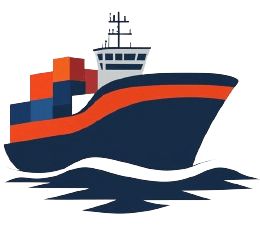| Theoretical Foundation | Utilizes quantum superposition and entanglement to explore multiple routing paths simultaneously, drastically reducing computation time for complex routing problems. | Relies on statistical models, neural networks, and reinforcement learning to predict optimal routes based on historical data, patterns, and real-time inputs. |
| Optimization Approach | Quantum annealing and gate-based quantum computing are leveraged to find global optima for logistics challenges such as the Traveling Salesman Problem (TSP) and Vehicle Routing Problem (VRP). | Utilizes gradient descent, genetic algorithms, and dynamic programming for solving optimization problems. ML models adjust iteratively based on feedback loops. |
| Computational Complexity | Achieves exponential speedup for certain classes of problems by exploiting quantum properties, making it possible to solve NP-hard problems in polynomial time. | Computational complexity is highly dependent on model architecture and input data size. Often struggles with scalability in high-dimensional spaces without dimensionality reduction techniques. |
| Real-Time Adaptability | Potential for near-instantaneous adaptation due to quantum parallelism, allowing rapid response to unexpected disruptions (e.g., traffic congestion, port delays). | Relies on continuous learning models, which update predictions based on real-time inputs. However, adaptability is limited by computational resources and the need for model re-training. |
| Data Requirements | Can work effectively with sparse data due to its inherent probabilistic nature, allowing solutions even in cases with incomplete or uncertain data. | Requires large, high-quality datasets for accurate prediction and optimization. Inadequate or biased data can significantly reduce the model’s efficacy. |
| Scalability and Complexity Handling | Superior scalability for exponentially complex networks, providing feasible solutions for logistics networks with millions of nodes. | Scalability is constrained by the size and depth of neural networks, often leading to exponentially increasing computational requirements with network complexity. |
| Hardware and Technological Dependencies | Requires access to quantum computers, such as D-Wave systems or IBM’s Qiskit platform, which are still in the experimental and development stages with limited availability. | Utilizes conventional computing resources, which are widely available. Compatibility with cloud-based ML platforms like TensorFlow or PyTorch enhances accessibility. |
| Energy Efficiency | Potential to be highly energy efficient as quantum systems operate at near-zero temperatures. However, significant energy is consumed in maintaining operational environments (e.g., cryogenic cooling). | Energy consumption depends on the scale of the computational resources utilized. Large-scale models and real-time learning frameworks can be energy-intensive, particularly in training phases. |
| Deployment Feasibility | Not yet fully feasible for commercial logistics applications due to the nascent stage of quantum computing technology and the lack of robust quantum logistics platforms. | Mature technology with numerous commercial applications in logistics, supply chain management, and autonomous systems. ML systems are readily deployable with established frameworks and toolkits. |
| Error Handling and Fault Tolerance | Quantum error correction is a significant challenge, as quantum states are extremely fragile and prone to decoherence. Ongoing research aims to develop fault-tolerant quantum systems. | Effective error handling through regularization techniques, dropout layers, and robust optimization methods. Fault tolerance can be enhanced using ensemble learning and error propagation techniques. |
| Cost of Implementation | Currently very high due to the rarity of quantum computers and the complexity of developing quantum algorithms. Expected to decrease as quantum technology matures. | Costs are generally lower and more predictable. Cloud-based solutions offer flexible pricing models, and the open-source nature of many ML tools minimizes initial investment. |
| Industry Adoption | Limited adoption in logistics and supply chain due to technological immaturity and high entry barriers. Early research and pilot projects are being explored in large-scale logistics firms and research institutions. | Widely adopted across logistics, retail, and manufacturing industries. Companies like Amazon, FedEx, and DHL have integrated ML-driven routing systems for demand forecasting, inventory management, and route optimization. |
| Future Prospects | As quantum computing matures, it could redefine logistics and supply chain optimization by solving complex routing problems that are currently intractable with classical computing. | Continued advancements in ML, particularly in reinforcement learning and deep neural networks, promise incremental improvements in route optimization and logistics efficiency. |
| Key Challenges | Quantum decoherence, error correction, and the need for stable quantum states. Building scalable quantum hardware and developing practical quantum algorithms remain significant hurdles. | Model interpretability, algorithmic bias, and handling real-time disruptions. The need for extensive retraining and model validation in dynamic logistics environments adds complexity. |

